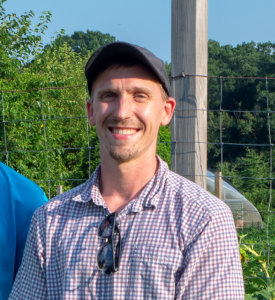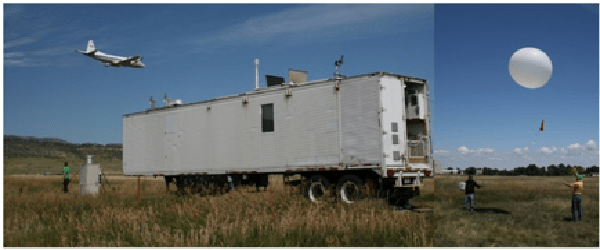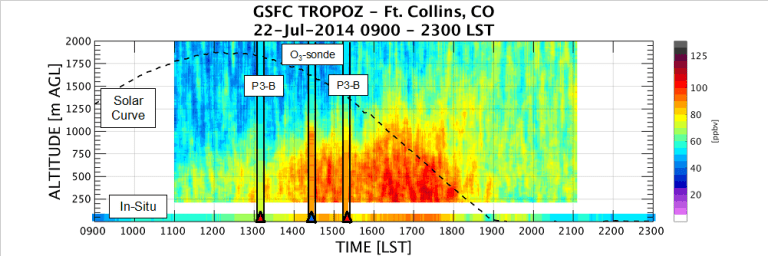Sixth Article of a series featuring Early Career Scientists

Author: John T. Sullivan
Introduced by IO3C Member: Irina Petropavlovskikh
Dr. John T. Sullivan is fascinated by the atmosphere’s vertical structure. John has a B.A. in Physics from McDaniel College (2010) and an M.S/Ph.D. in Atmospheric Physics from the University of Maryland, Baltimore County (2012 and 2015). His dissertation included the construction, validation, and deployment of a mobile ground-based tropospheric ozone differential absorption lidar (DIAL) for use in air pollution transport, boundary layer dynamics, and exchanges of stratospheric and tropospheric air studies (Tropospheric Ozone DIAL or TropOz). This instrument was a collaboration with the lidar experts from NASA Goddard. His dissertation relied heavily on data from the 2014 NASA DISCOVER-AQ mission (see Fig 2). As part of a number of air quality studies, John began to understand and enjoy field deployments (particularly in areas where he wouldn’t develop high-altitude sickness). In 2015, he was awarded a NASA Postdoctoral Program Fellowship. In December 2017, he accepted a position at Goddard to continue developing instrumentation measuring troposphere and the stratosphere trace gases – increasing the Goddard 30-yr heritage of lidar measurements associated with the Network for the Detection of Atmospheric Composition Change (NDACC). John’s work has demonstrated TropOz data quality, and TropOz is now part of two major measurement networks: NASA’s Tropospheric Ozone Lidar Network (TOLNet) as a charter member, and NDACC.
John is now the Principal Investigator for the TropOz instrument. During deployments, John is usually found optimizing/troubleshooting the lidar or fixing surface chemical analyzers. He is also found preparing ozonesondes – he’s done ~200 launches since 2014. A notable deployment (and not just for the bibimbap or Korean BBQ) was when the TropOz trailer was sent to South Korea for the KORUS-AQ campaign. TropOz was deployed to a remote forest to better characterize Seoul pollution outflow. John’s also done campaigns to Mauna Loa, Hawaii (2014-2015), Haute de Provence, France (2017-2018), and Hohenpeissenberg, Germany (2018).

John has garnered an appreciation for lidar’s nature, particularly the instrumentation quirks and how it can (subtly) impact signal processing and data interpretation. However, he views lidar as a Swiss army knife-like for usage by intersecting communities, such as satellite teams and policy makers. John realized tropospheric ozone profiles could be used to better understand the photochemical and diurnal cycle of urban pollutants and their impacts on the outdoor environment – particularly in complex topography. This motivated his recent adventures to understand the physical and chemical processes that occur near coastal regions. In 2017, he was named as the Early Career Scientist associated with NASA’s Ozone Water-Land Environmental Transition Study (OWLETS). More recently, John was the PI of the follow-on OWLETS-2 deployment in Baltimore (2018). John brought together scientists and policy makers from the Maryland Department of the Environment. During the OWLETS campaigns, he coordinated deployments of TOLNet lidars, ceilometers, ozonesondes, aircraft (including drones), research vessels and surface analyzers to provide direct observations around the Chesapeake Bay. With this experience of leading a large-scale field campaign, John hopes to continue these motivated efforts and eventually transition to a position as the Coordinating PI of TOLNet and lead further large-scale campaigns.

John is an avid coffee drinker and beer-brewer. When he is not in the field, he enjoys the simple things in life: biking, camping, walking his dog, or doing whatever his 3-yr son old forces him to do.
